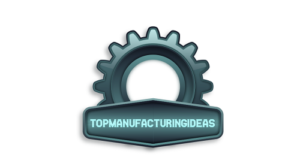In today’s industrial and commercial environments, maintaining high standards of hygiene isn’t just a matter of aesthetics but crucial for ensuring safety, compliance, and overall brand image. One often overlooked aspect of hygiene is the cleanliness of footwear, which can harbor contaminants and pose risks in various workplace settings.
Why Workplace Hygiene is Important
Workplace hygiene plays a pivotal role in safeguarding employee health and maintaining operational efficiency. Cleanliness standards are particularly stringent in sectors like healthcare, food processing, and manufacturing, where regulatory requirements mandate strict adherence to cleanliness protocols. Beyond regulatory compliance, a clean workplace fosters a positive environment, boosts employee morale, and enhances the overall perception of professionalism.
Understanding Contamination Risks
Contaminants on footwear can originate from various sources, including outdoor environments, industrial processes, and chemical spills. These contaminants not only compromise workplace hygiene but also increase the risk of cross-contamination, potentially leading to product contamination or even health hazards for employees and customers alike.
Role of Shoe Sole Cleaning Machines
Shoe sole cleaning machines have emerged as indispensable tools in maintaining hygiene standards across industries. These machines are designed to effectively remove dirt, debris, and contaminants from footwear before individuals enter controlled environments. By incorporating brushes, water jets, etc., these machines ensure thorough cleaning without compromising the integrity of the footwear. Additionally, integrating a shoe polish machine alongside these cleaning machines ensures that footwear not only remains clean but also maintains a polished appearance, further enhancing workplace hygiene and professional presentation.
Applications in Different Sectors
In sectors such as healthcare facilities, where infection control is paramount, shoe sole cleaning machines help prevent the spread of pathogens between wards and patient rooms. Similarly, in food processing plants, these machines mitigate the risk of food contamination by ensuring that footwear is free from external pollutants before entering production areas.
Benefits of Automated Systems
Automated shoe sole cleaning machines offer several advantages over manual cleaning methods. They provide consistent cleaning results, reduce labor costs associated with manual cleaning, and enhance overall operational efficiency. Moreover, these machines are designed to be user-friendly, requiring minimal training for employees to operate effectively.
Choosing the Right Solution
When selecting a shoe cleaner machine, organizations should consider factors such as throughput capacity, ease of maintenance, and compatibility with specific workplace environments. Machines equipped with features like automatic water refilling and integrated disinfection systems offer added convenience and effectiveness in maintaining hygiene standards.
Conclusion
Shoe sole cleaning machines play a pivotal role in enhancing workplace hygiene, safety, and overall image across various industries. By investing in advanced cleaning technologies like shoe sole cleaning machines and integrating them into daily operational practices, organizations can uphold rigorous hygiene standards, comply with regulatory requirements, and project a professional image to employees, clients, and visitors alike.
